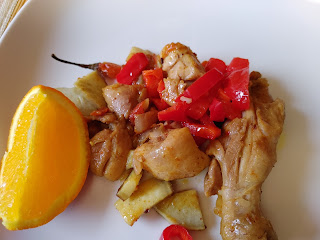Recipes in Novels
 |
| Austin Clarke, Canadian author who was born in Guyana explains slave food and other mouth-watering recipes in this book. |
I always find their answers
intriguing. I did not buy Queen of the Big
Time, by Adriana Trigiani. I got it from a book swap with a friend. Guess what?
It has recipes.
The stories might be part fiction
part reality, but recipes are real, because they force you to go to the
supermarket or your garden, come back and cook up a storm. That is why I like such books.
Queen of the Big Time reminded me of
the African American author, Ntozake Shange.
She was very special to me because she was one of the first African
Americans to adopt African names.
Some of them regarded their names as
‘slave names’ because they were named by their slave masters. Slaves were property, so their names had to
reflect that. Arabic names were also
popular because famous people such as Mohammed Ali converted to Islam and
adopted names from that religion.
I was interested in Ntozake Shange
because the first and last names she adopted are Zulu. Ntozake means ‘her things’ and Shange is a
common Zulu surname. She has recipes in
her book, Sassafrass, Cypress and Indigo, a story about three sisters growing
up in the south, the relationship with their mother and leaving home.
Ntozakhe also wrote a play called For
Colored Girls Who Have Considered Suicide/When the Rainbow is Enuf, which Tyler
Perry turned into a film project.
My Year of Meat, written by Ruth L.
Ozeki, has a cover you cannot ignore: a cow and two giant chopsticks. It is a hilarious book about all sorts of
things, including the madness of trying to co-ordinate one hundred and one
things for a weekly television programme.
I don’t know why I was disappointed
that there were no recipes in the book.
Was it the title? Anyway, My Year
of Meat does have on small recipe in the first chapter. It is an introduction to the main character Akiko,
a Tokyo housewife who religiously watches a television programme about beef,
because her husband works for the ad agency, hired by BEEF-EX, the client.
Mona Berman’s book, E-mail from a
Jewish Mother does not have recipes as such, but she involves food when she
reminisces about the life she had with her four daughters who now live in
London. Perth, Venda and Durban. She
reminds them of stuffed kneidlach and chicken soup, carrot and prune tzimmes,
meatless rossel borscht and more.
Shoba Narayan’s book Monsoon Diary also
has recipes. It is not a work of
fiction. It is about growing up in
Coimbare India, where her grandparents lived, attending universities in the
United States, getting married, basically her whole life. I love the recipes in her book because I love
cinema and always decry the lack of food in movies.
Hollywood films are notorious for well-laid tables, glasses of water but no food. Food is one of the reasons why I enjoy Chinese films where food preparation is part of the story.
I wonder if publishers still print fiction
books with recipes.



Comments